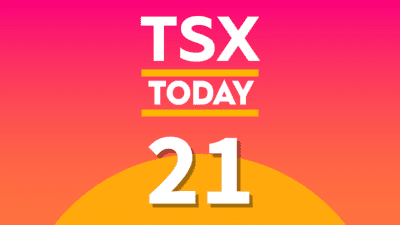TFSA contribution limits for 2022 sit at $6,000. Maxing that out consistently every year and investing in high-quality stocks is a great way to grow a six-figure portfolio. That being said, figuring out what stocks to invest in can be challenging.
While you may be reading up on all the great picks that the other Foolish writers have selected, my suggestion is plopping that $6,000 in an exchange-traded fund, or ETF. These are baskets of stocks that trade on exchanges. Compared to stocks, ETFs offer higher diversification while saving you the time and headaches involved with stock picking.
Today, I’ll be going over two high-growth, low-cost ETFs that track different U.S. stock market indexes. Let’s take a look at my favourite picks.
The NASDAQ 100
The NASDAQ 100 tracks the 101 largest companies listed on the NASDAQ exchange. Currently, it’s seen as a barometer for U.S. mega-cap growth stock performance, and is heavily weighted towards the technology sector at 50%.
A great ETF for buying the NASDAQ 100 in Canadian dollars is the iShares NASDAQ 100 Index ETF (TSX:XQQ). Year-to-date, this ETF is down over 26% due to rising interest rates and high inflation. As a result, the current correction could be an excellent entry point.
XQQ is highly volatile and best suited for risk-tolerant investors with a long-term focus. In terms of fees, the ETF charges a management expense ratio (MER) of 0.39% annually. For a $10,000 investment, this results in around $39 of fees per year.
The S&P 500
Investors who want a more diversified approach to investing in the U.S. market can buy the S&P 500 instead, which tracks 502 blue-chip U.S. stocks. The index spans all 11 stock marker sectors with a concentration in technology, financials, and consumer cyclical stocks.
A great way to invest in the S&P 500 using Canadian dollars is via the Vanguard S&P 500 Index ETF (TSX:VFV). It’s one of the world’s most popular index funds, and has out-performed the vast majority of active funds over its lifetime. Year-to-date, VFV is down 15.4%. The last time VFV dipped this low was during the brief March 2020 pandemic-related crash. This can be a great way to lock in shares on a low-cost basis.
VFV is less volatile than XQQ due to its lower concentration of technology stocks (25% of the ETF). However, this ETF still involves some inherent risk and is best suited for long-term, risk tolerant investors. In terms of fees, it’s vastly cheaper than XQQ with a MER of just 0.09%.
The Foolish takeaway
If you’re bullish on continued U.S. stock market performance, either XQQ or VFV could be a great way to invest your $6,000 TFSA contribution. If you’re confident about the tech sector making a comeback, XQQ might be your pick. Otherwise, the broader diversification offered by VFV may be preferable. Regardless, both ETFs make for low-cost, long-term buy-and-holds.







